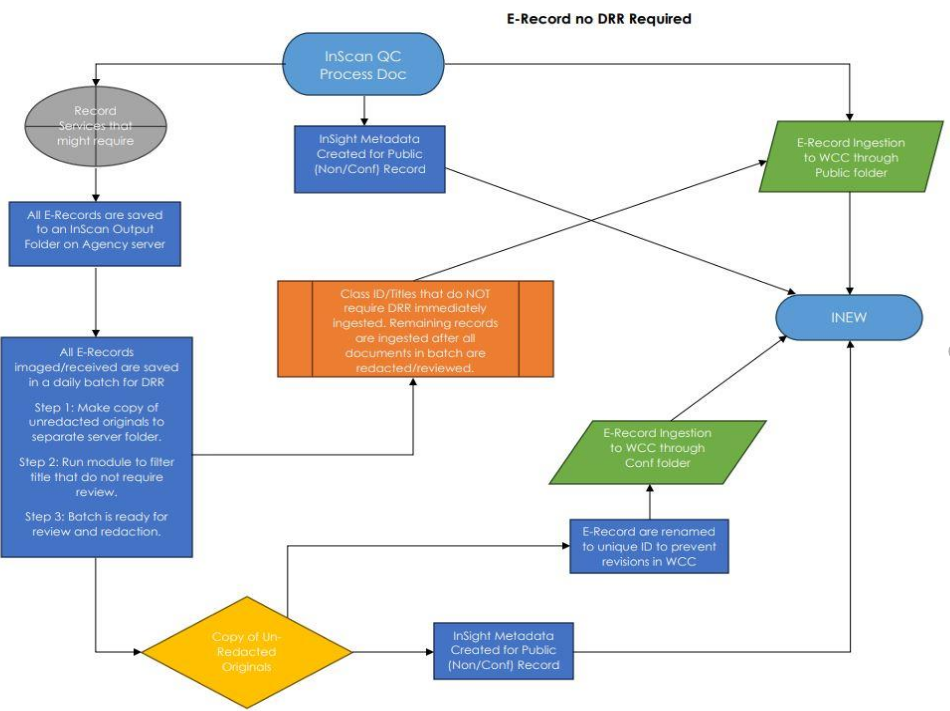Client profile
The Texas Commission on Environmental Quality (TCEQ) is the environmental agency for the state of Texas. The TCEQ strives to protect the state’s human and natural resources consistently with sustainable economic development. The agency’s goal is to maintain and conserve clean air, clean water, and the safe management of waste.

Challenges
The primary challenge faced by the client was the significant volume of information stored in hardcopy format and legacy data. This presented difficulties in promptly responding to Public Information Requests (PIRs) due to the time-consuming process of converting older data.
To address this, the client recognized the need for a dedicated secondary document imaging project. This project would focus on prioritizing the conversion of older document series readily available for imaging and review. Concurrent with this, day-to-day records management would continue to be overseen by the existing records vendor.
The overarching objective of this secondary project is to proactively increase the availability of public information online, thereby minimizing the need for the public to submit formal PIRs.
Business Situation
The Texas Commission on Environmental Quality (TCEQ) required a secondary program to manage the digitization of hardcopy documents, including legacy media, into electronic records. This initiative necessitated the review of all digitized documents for Personally Identifiable Information (PII) and the subsequent public release of the reviewed data.
Initially, all digitization standards were aligned with State Statutes 441, Subchapter L, and relevant Government Codes as published by the Texas State Library and Archives Commission. However, a subsequent evaluation revealed the necessity of adhering to Environmental Protection Agency (EPA) and Federal regulations to ensure the creation of the highest quality digital images for long-term preservation and replacement of physical records.
This need included the following:
- Provide guidance on the acquisition of necessary hardware and software required to digitize and publish converted records.
- Digitize all records identified as having the highest frequency of requests under the Texas Public Information Act (Texas Government Code Chapter 552 et seq.), utilizing TCEQ’s on-site equipment.
- Conduct a comprehensive review of all digitized records for Personally Identifiable Information (PII). Subsequently, publishing these records on TCEQ’s public-facing website to proactively address potential Public Information Requests.
Solution
PacoTech employed a phased approach to scanning, reviewing and publishing TCEQ’s documents. This included collaborating with existing contractors to acquire the records for imaging.
To safeguard the integrity of the records, Pacotech implemented a rigorous inventory control system to promptly identify and address any discrepancies before commencing the scanning process.
Pacotech digitized records in accordance with TCEQ’s established filing system. Subsequently, the imaged records were ingested into TCEQ’s Enterprise Content Management (ECM) application. Documents were then assigned for review and subsequent publication within a 30-day time frame after the imaging process was completed.
- To ensure quality standards are met the
project set the following expectations:- All documents are imaged at 300 DPI
- A page-by-page review is conducted to ensure all hardcopy documents are scanned.
- PacoTech created a custom access database to log all statistical information during document preparation, indexing, imaging, quality control, and DRR. This database provides monthly statistical information that is submitted to the agency.
Products and Services Used
The following products and services were utilized by PacoTech in the current TCEQ Document Conversion Project.
- High Production Document Scanners
- Custom Production Tracking Database – MS Access
- Oracle Database – Web Center Content
Services provided by Other Groups or Companies
Records were sourced from the following entities by PacoTech for imaging.
- TCEQ Subcontractors
- CFR Contractor: Plano Data

Achievement
In the first year of the project, the team demonstrated a remarkable performance, exceeding the monthly publishing goal of 700,000 pages for consecutive months.

Positive Reaction
The Document Conversion Project received accolades from the TCEQ Project Manager and TCEQ OAS Director for consistently surpassing monthly performance targets. PacoTech has an overall A rating from the Vendor Performance Report from the state of Texas.
Result
The Document Conversion project remains in Phase III, continuing to provide services to the client while consistently meeting project goals and expectations. To date the project has achieved a significant milestone, published over 7.5 million pages, and digitized over 2.5 million records in a 9-month period. The project started the second term on January 1, 2025, of a 5-year contract.
























